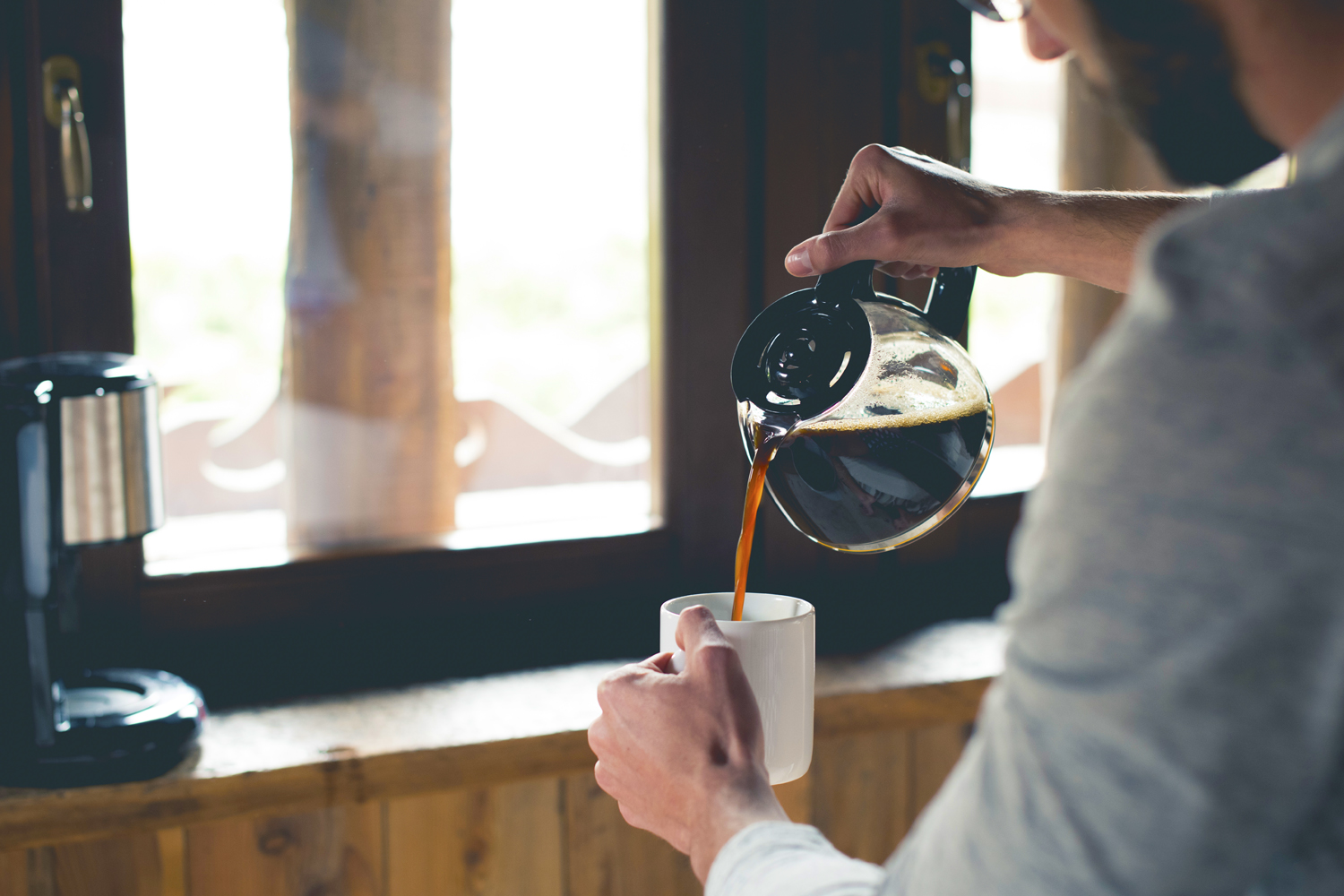There are endless ways to brew a delectable cup of coffee, from French Press brewing to the pour-over method. Though these coffee brewing methods offer advanced precision and control, it’s best to master how to make coffee with an auto-drip coffee maker first (think Grandma’s coffee pot).
Since 1908, the drip coffee maker has remained the most popular way to brew coffee — simple, effective, and easy to learn. I learned how to make coffee at a young age but only first mastered the art as an adult. As a child, I was just happy when I could brew coffee alone without waiting for someone else to brew it. Yet, I later acquired a taste for stronger, bolder coffee. This led me back to the drawing board, looking for a way to brew better (and bolder) coffee using a drip maker.
Here’s what you need to know to perfect your brewing technique and how to make coffee that hits the spot every time.
How to make coffee

For the most part, making coffee with an auto drip maker follows the same general steps with a few exceptions. The amount of ground coffee and water you use depends on how many cups you want to make and the desired strength of your cup of coffee. Any coffee roast works well with this brewing method as long as it is ground to a medium texture.
If you’re making coffee for only yourself, you might only want to make a few cups at a time to maintain freshness and avoid waste. Yet, if you have a large party or gathering, you’ll probably want to brew at least 12 cups of coffee.
Here’s the general basics of how to make coffee:
- Pour water into your coffee maker’s reservoir. Most coffee pots have markings for cup measurements in common incriments, such as 8 or 12 cups.
- Place a paper coffee filter into the basket. Some coffee makers may take different sizes or shaped filters, so check the manual for your model to ensure you use the correct filter.
- Add your desired amount of ground coffee (weighed or measured) to the filter. If you’re using whole bean coffee, you’ll first need to grind your beans before brewing. The best grind size for drip makers is a medium grind size.
- Hit “brew” and allow your coffee maker to complete the brew cycle fully. Drip coffee makers generally take between 4 and 8 minutes to fully brew.
- Pour your coffee into a mug and enjoy!
Water-to-coffee ratio

As you can see, the steps for brewing coffee are not overly complex. The biggest “question mark” of the process — which can make or break your cup — is using the correct water-to-coffee ratio. Often referred to as the “golden ratio,” mastering the right water-to-coffee ratio is how you’ll adjust the strength of your coffee. Per the National Coffee Association, the widely accepted “golden ratio” is one to two tablespoons of ground coffee for every six ounces of water you use.
If you like your coffee on the mild side, I recommend staying on the lower side of that range — using about one tablespoon of ground coffee for every six ounces of water you use. For those who like a bolder brew like I do, you’ll need to use about two tablespoons of ground coffee for every six ounces of water. If I’m making a 12-cup pot of coffee, I’ll use about 24 tablespoons of coffee. Of course, you can use a “heaping” tablespoon or 1.5 tablespoons per six ounces of water for a medium, not-too-weak, not-too-strong cup of coffee.
How to make coffee better

Perfecting the correct water-to-coffee ratio will undoubtedly elevate the taste of your coffee. However, there are other factors to consider, too, if you aspire to learn how to make your coffee even better. Some considerations include:
- Weighing your coffee: Yes, measuring your coffee by tablespoons takes less time and is more straightforward. Yet, weighing your coffee yields a more precise, consistent brew every time. If some batches of coffee come out mediocre, I recommend experimenting with weighing your coffee dose. It makes a world of difference.
- Quality of water: Since a cup of coffee is about 98% water, the quality of your coffee matters. Use filtered water instead of tap water for a better-tasting cup of coffee.
- Water temperature: The water temperature is commonly overlooked when people learn how to make coffee. Using too hot water can leave your coffee tasting too bitter, but using too cold water can weaken the taste. Hot water should not be used with a drip maker, as the maker is already pre-set to warm the water to the appropriate temperature. Always use cold water when brewing coffee with a drip maker.
Selecting your coffee

Even once you’re a pro at making coffee, the quality of your can make or break your brew. Using high-quality, premium coffee will always yield a better-tasting brew. According to certified Q grader and Podium Coffee Club co-founder Sam LaRobardiere, “brewing great coffee is a balance of science and art.” Sam recommends experimenting with different coffee types with unique flavor profiles. He also suggests adjusting variables like grind size, temperature, and coffee-to-water ratio to unlock their potential.”




